
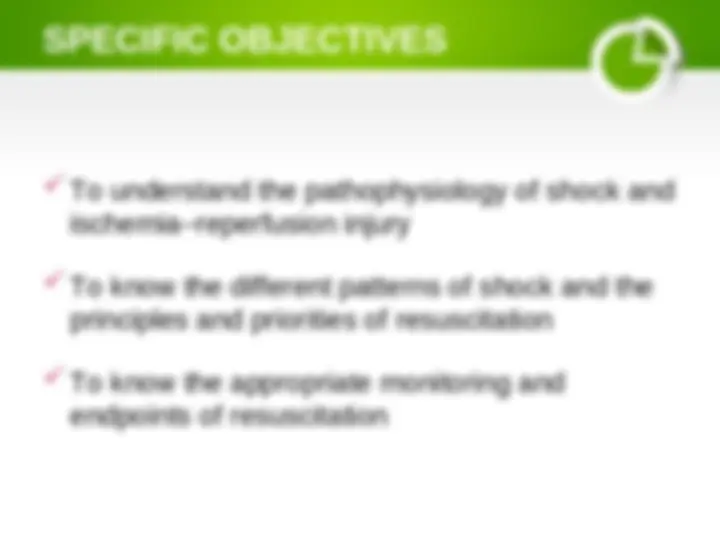
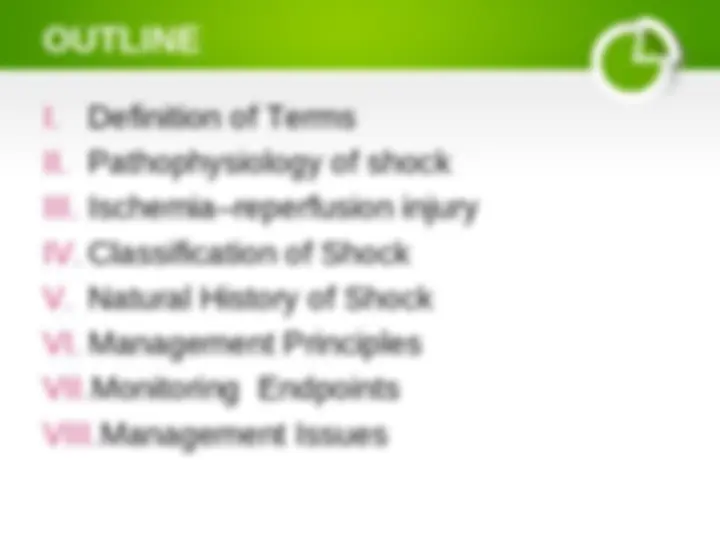
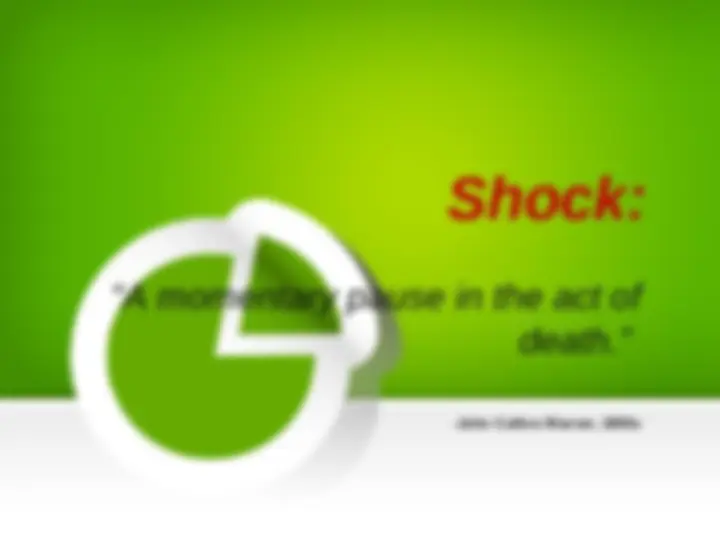
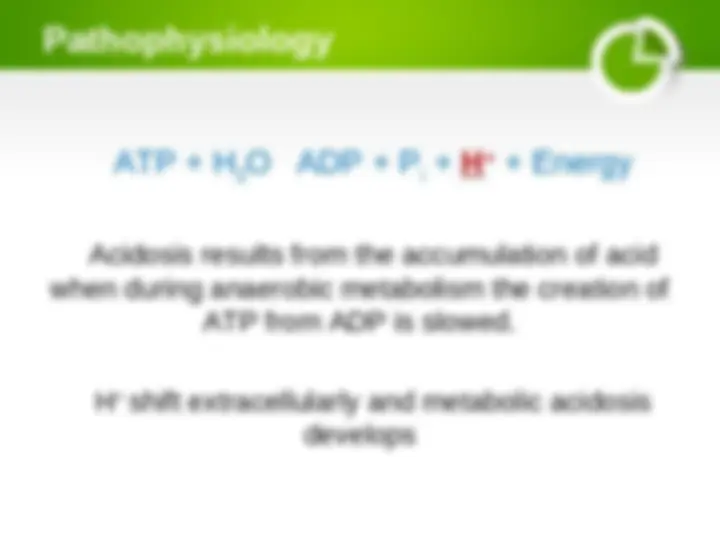
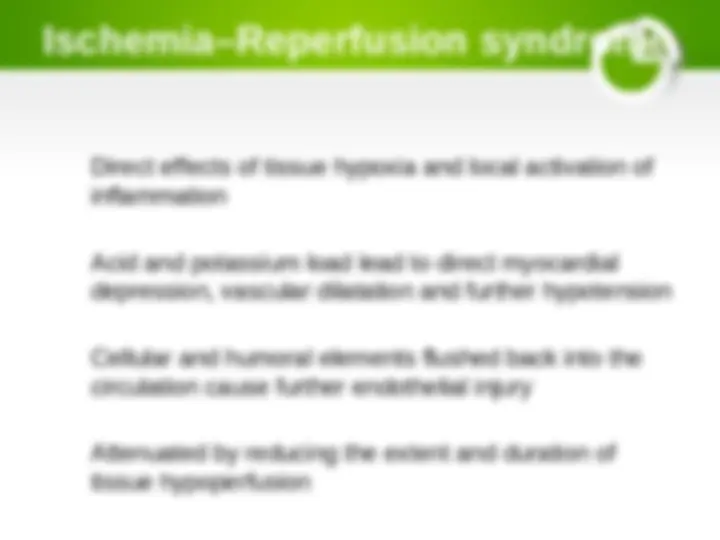
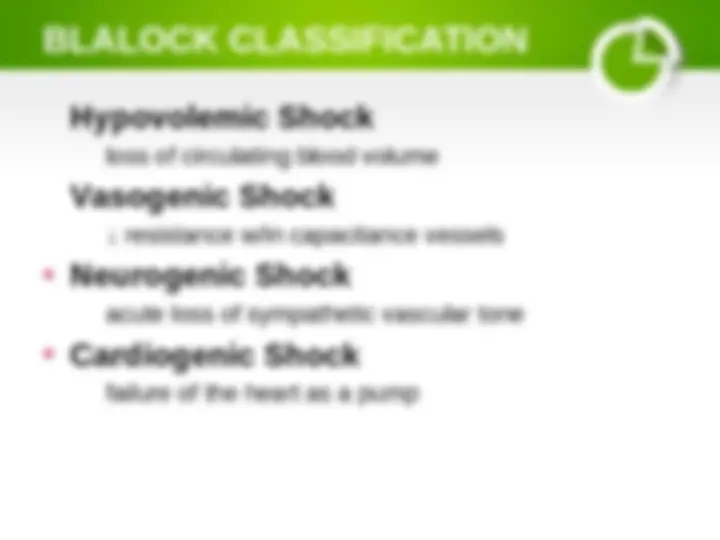
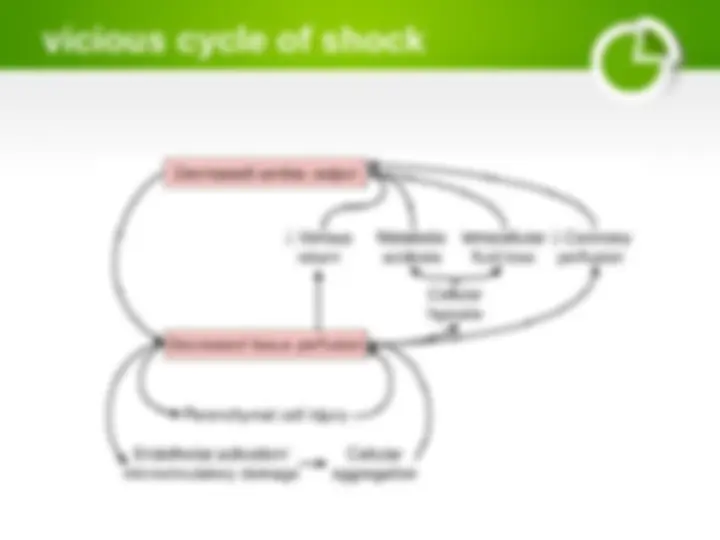
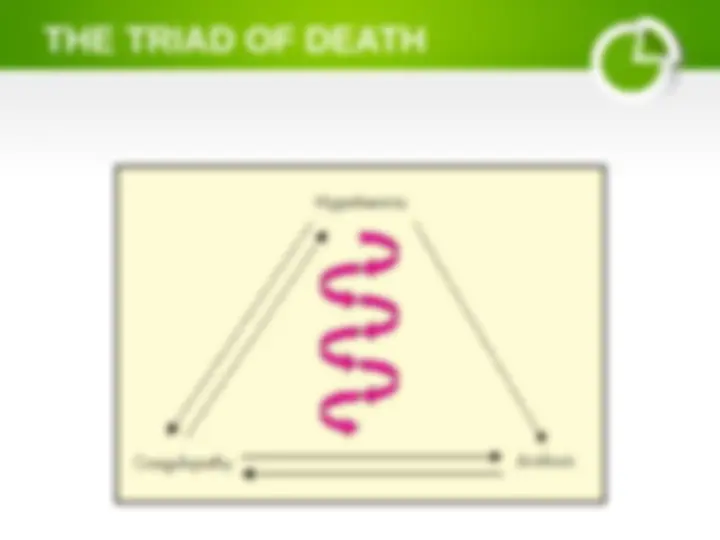
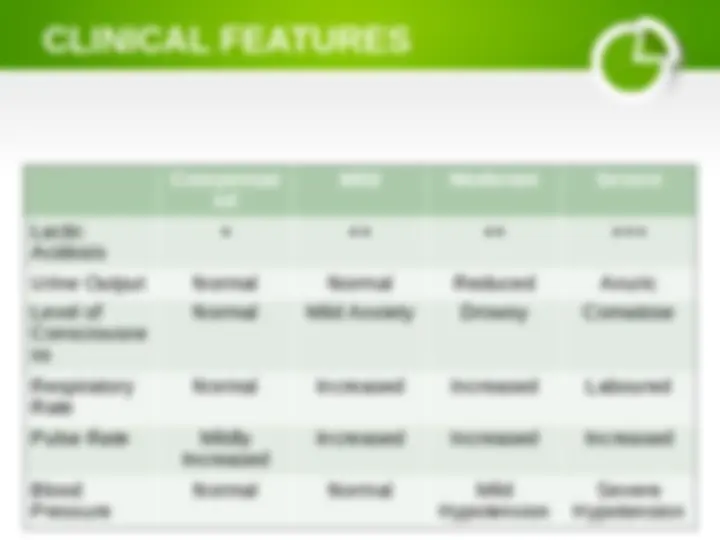
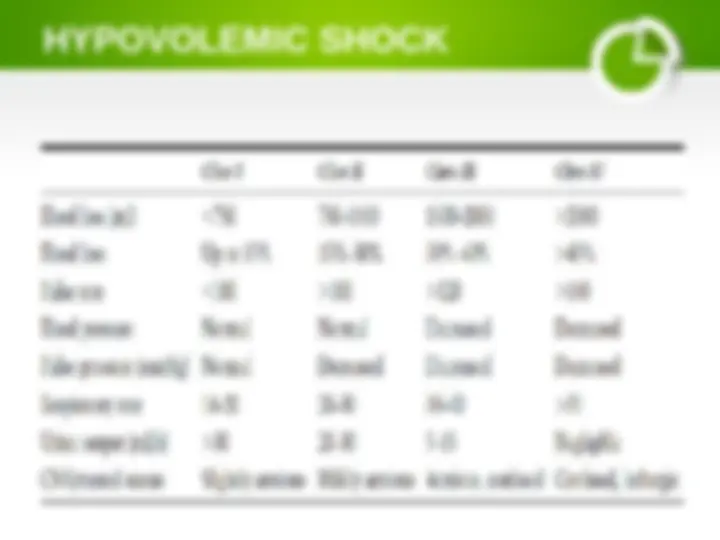
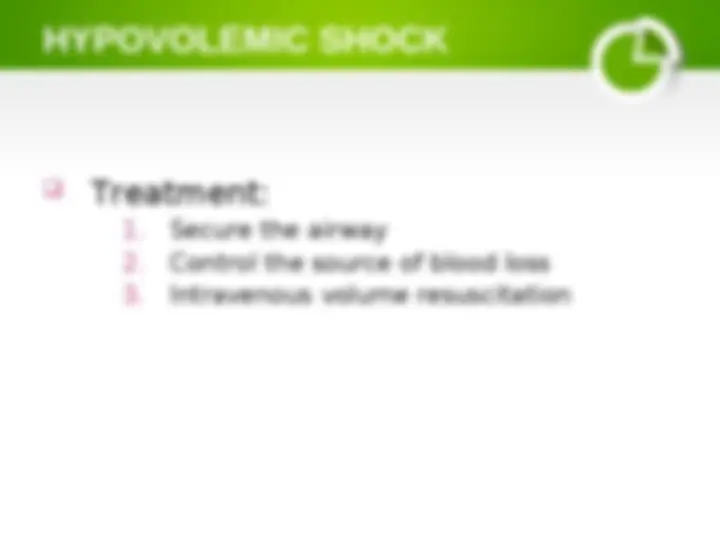
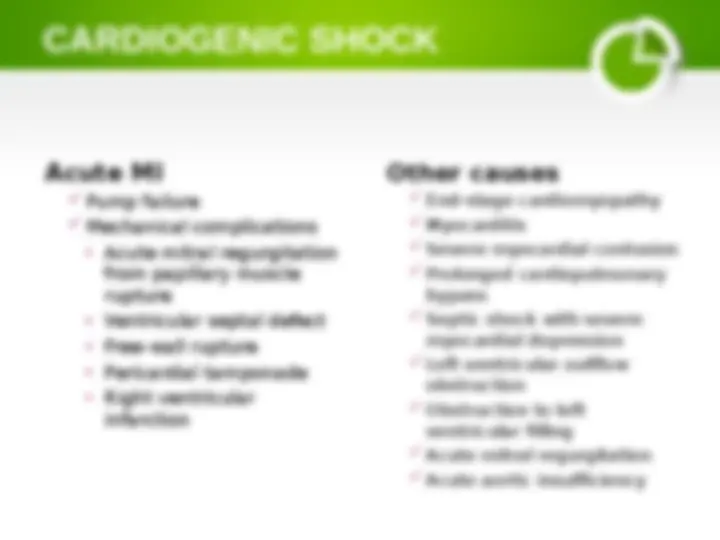
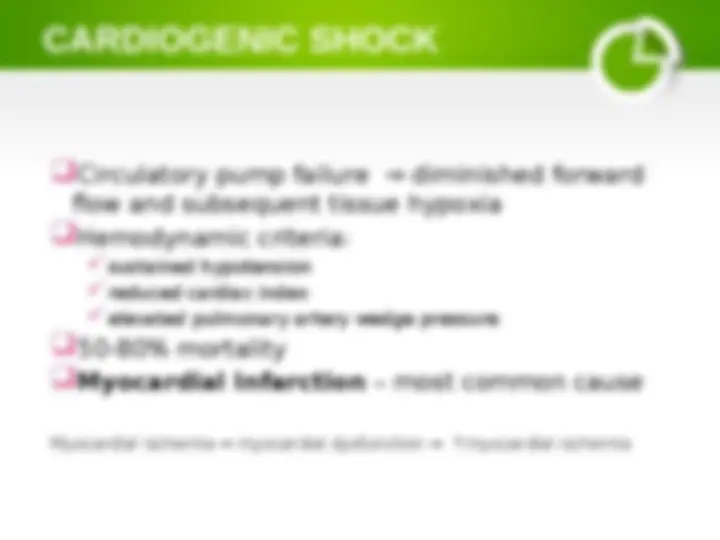
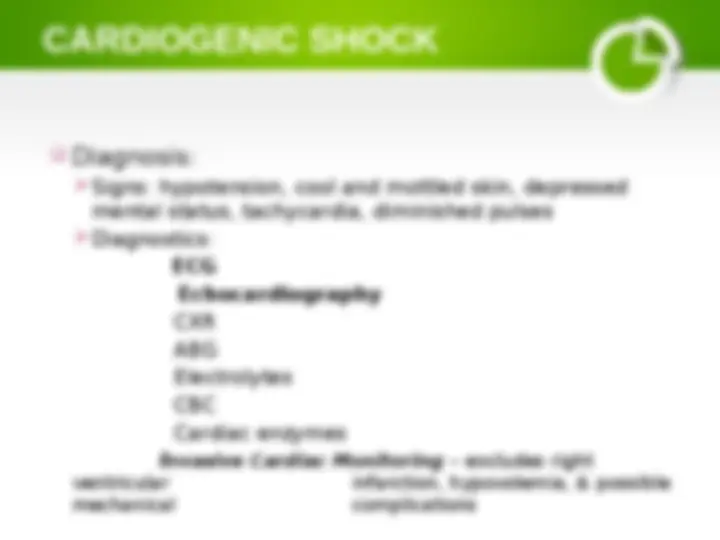
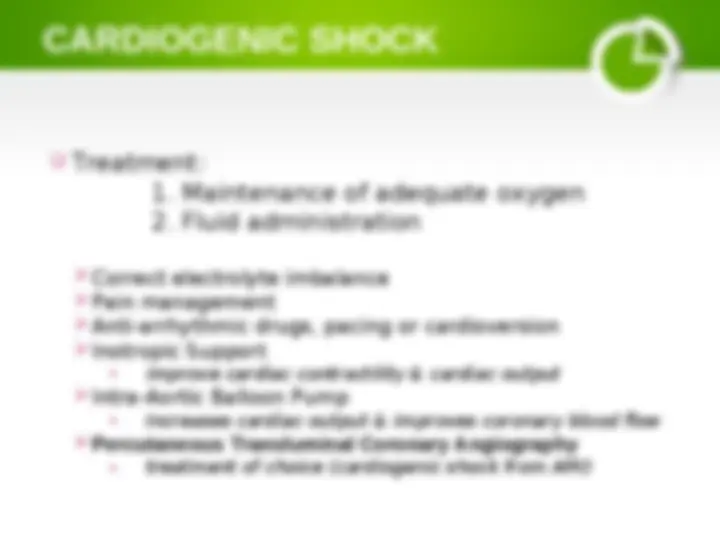
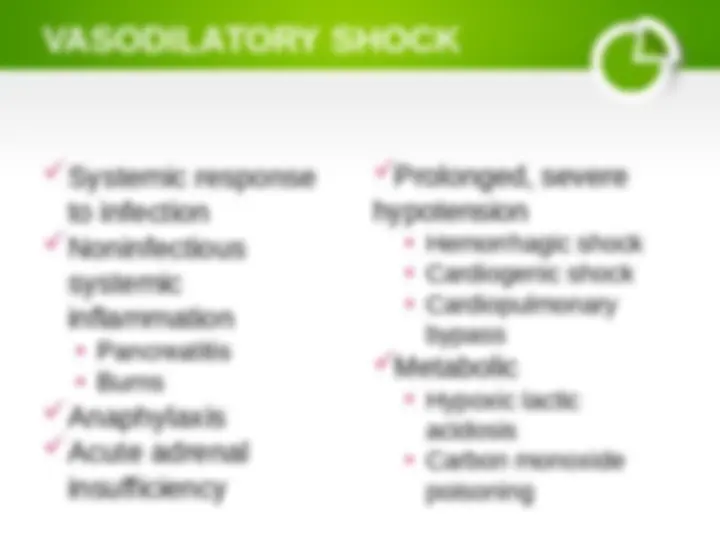
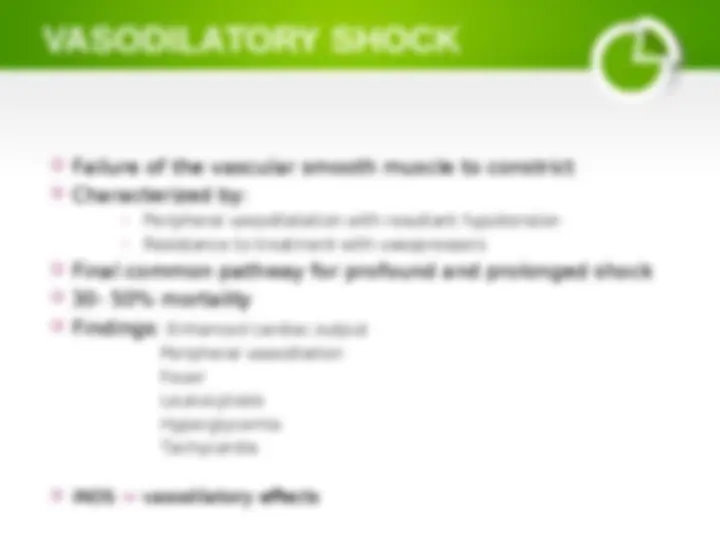
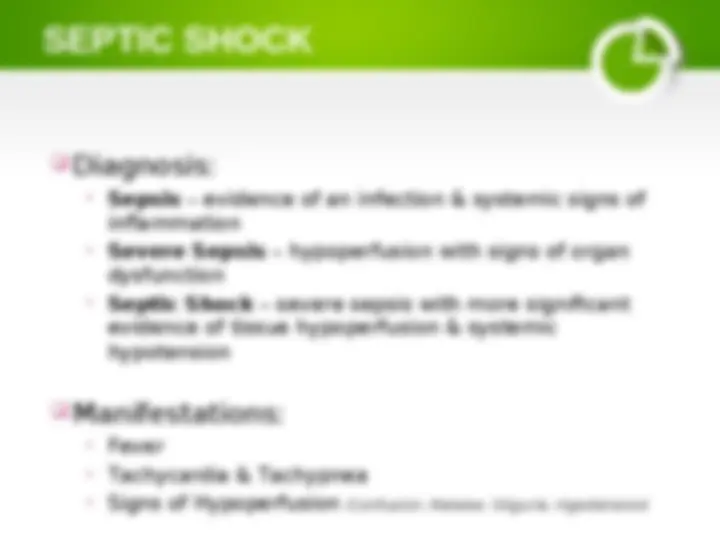
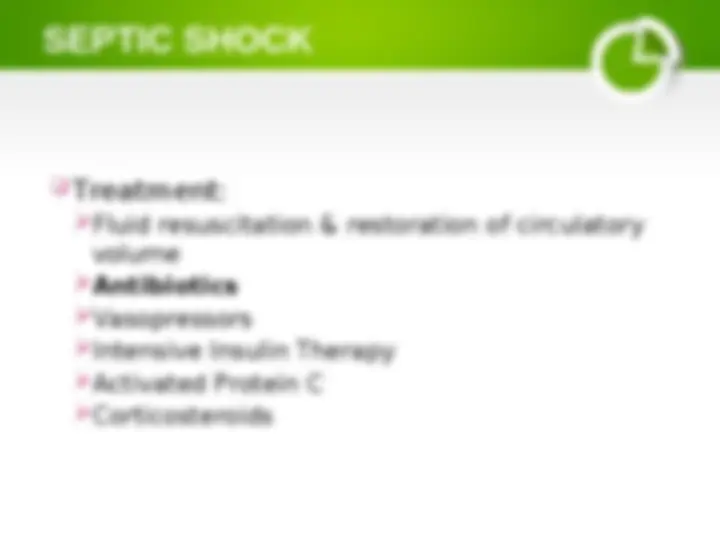
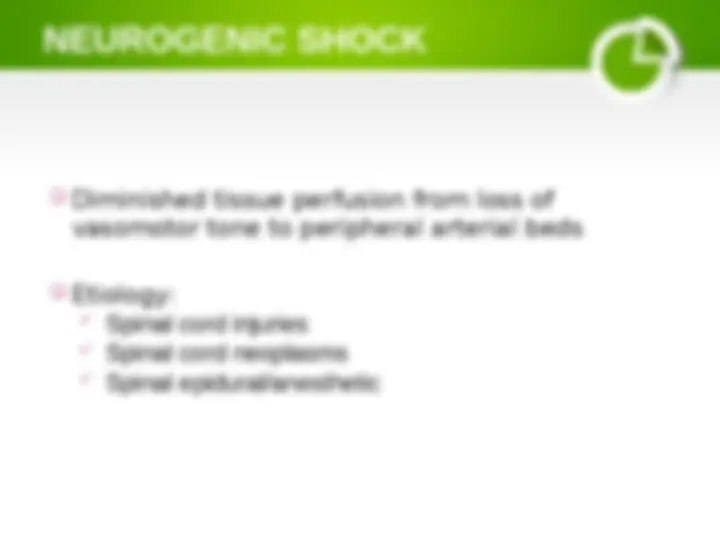
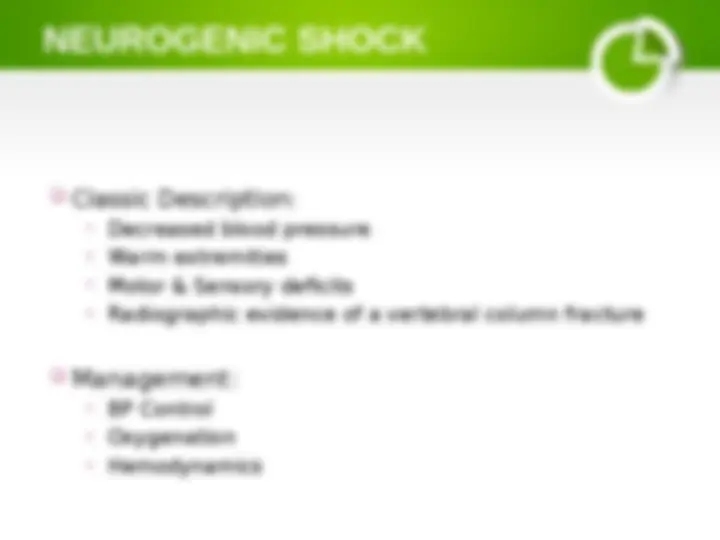
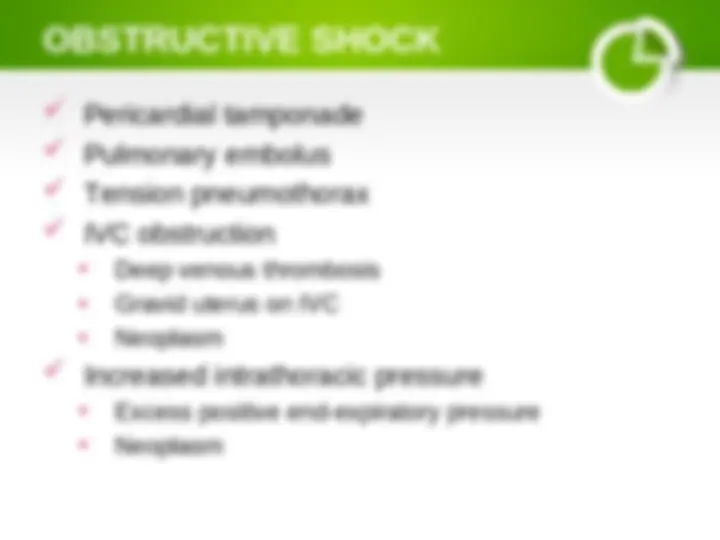
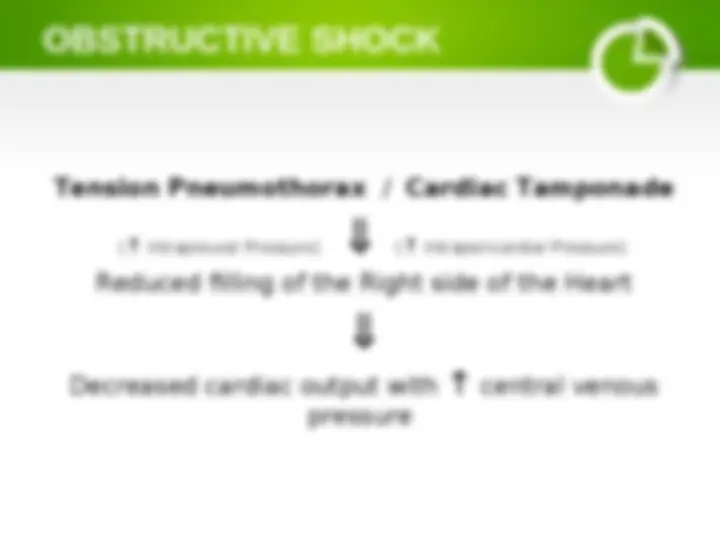
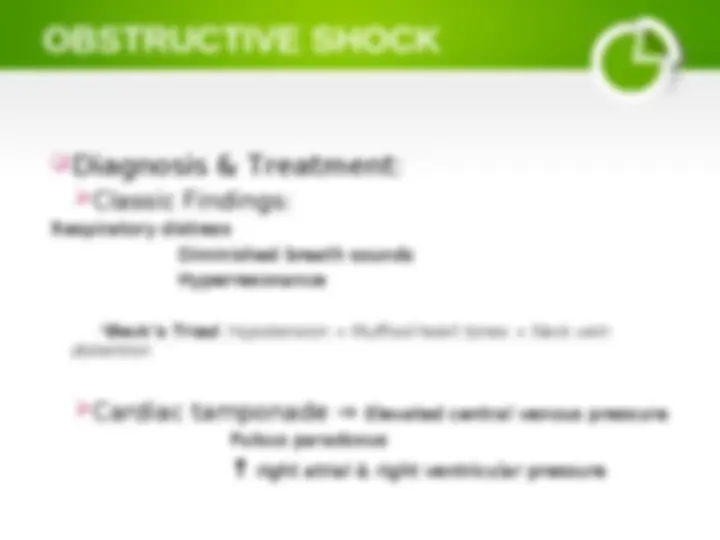
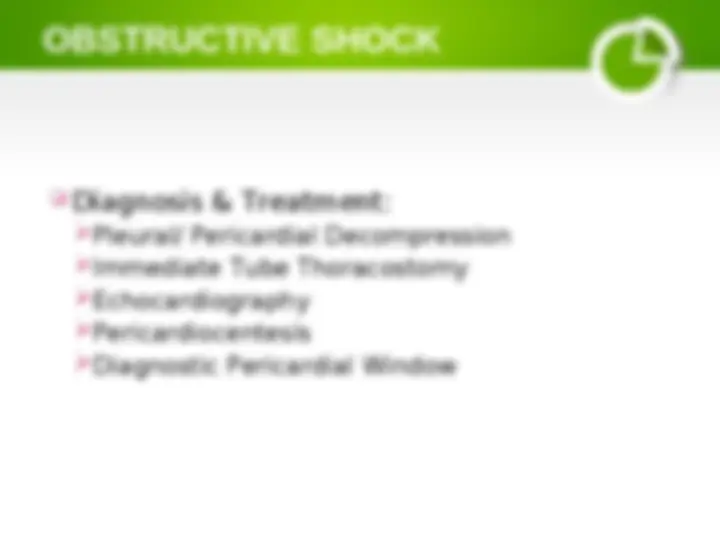
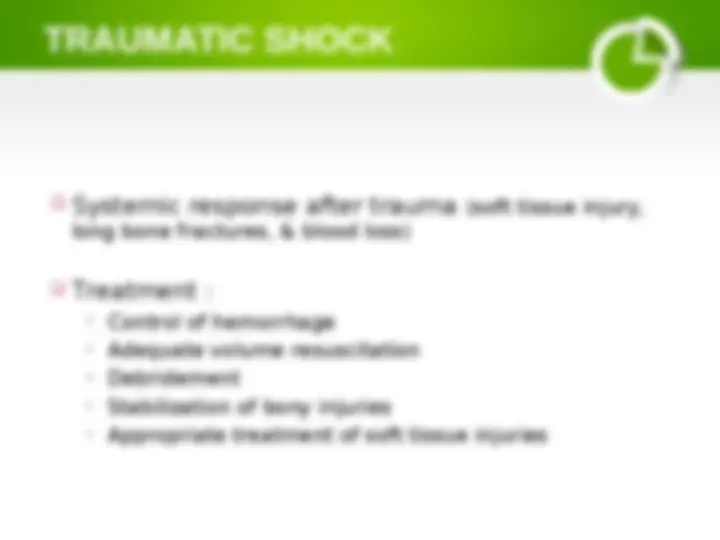
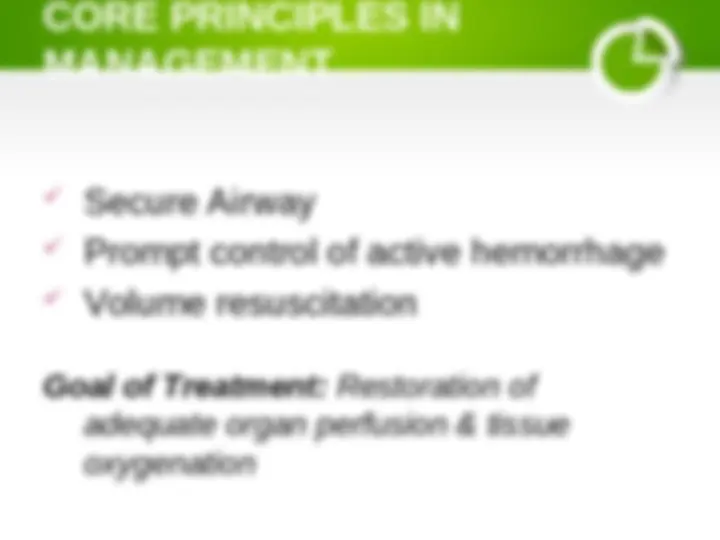
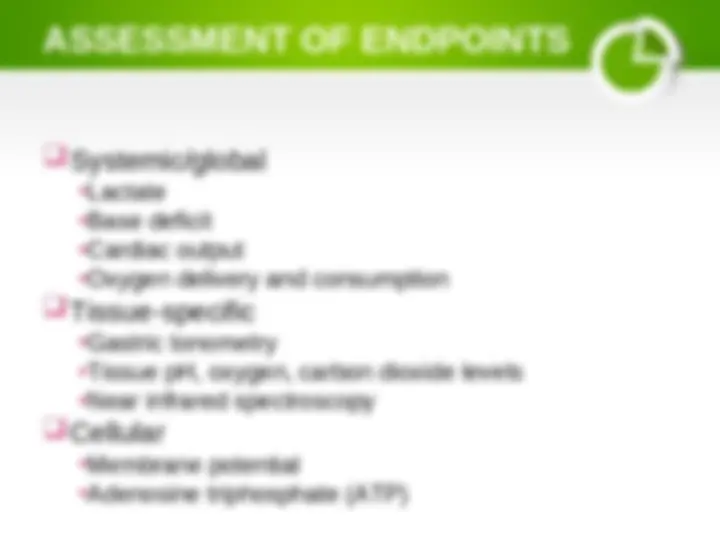
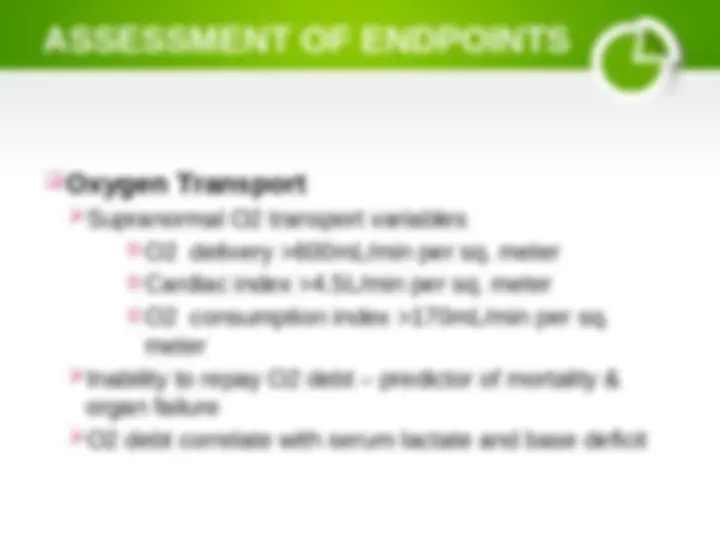
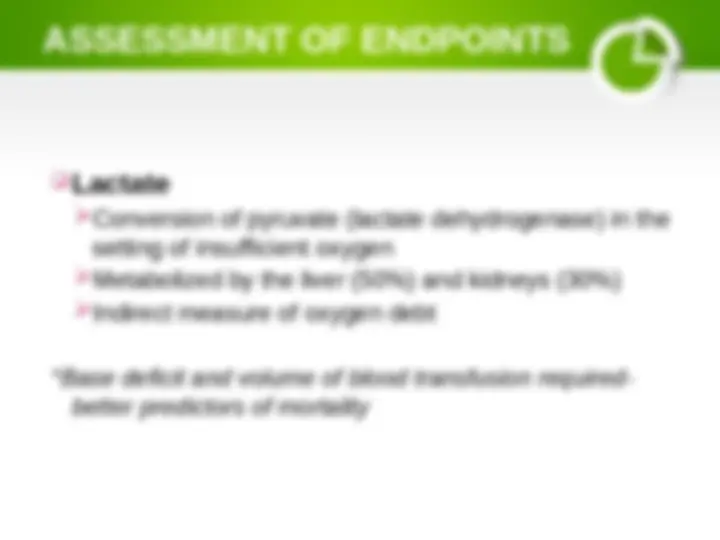
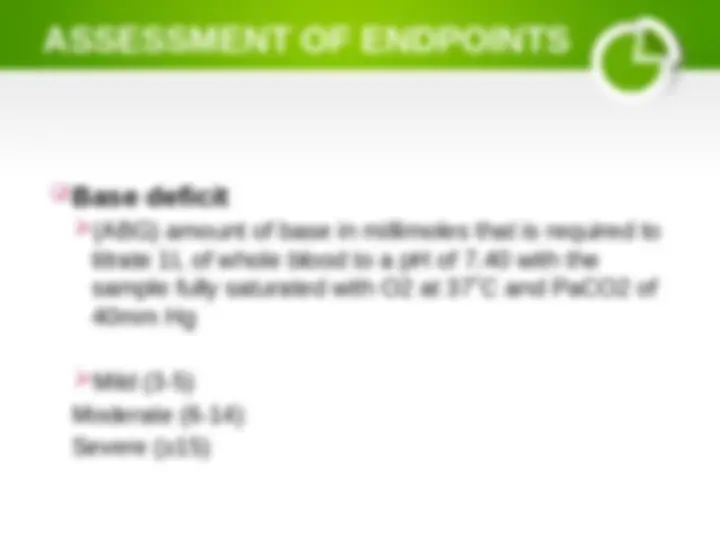
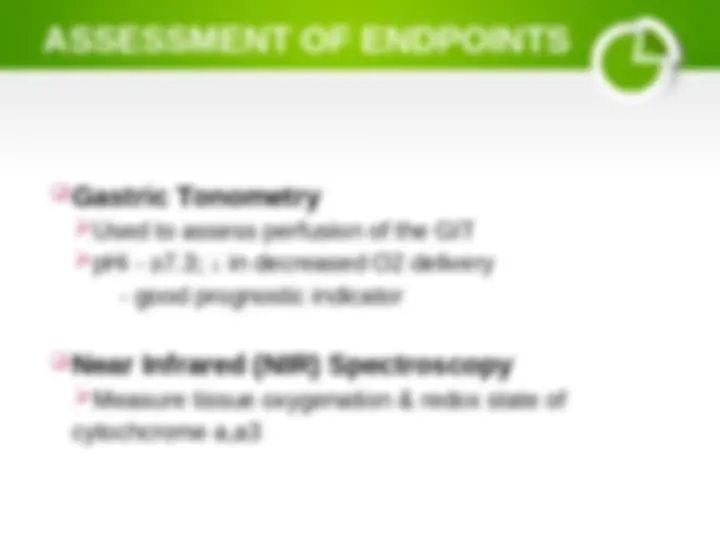
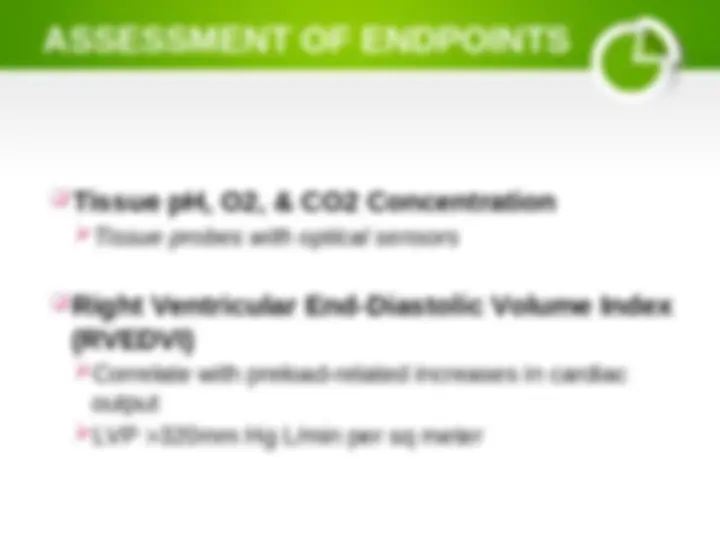

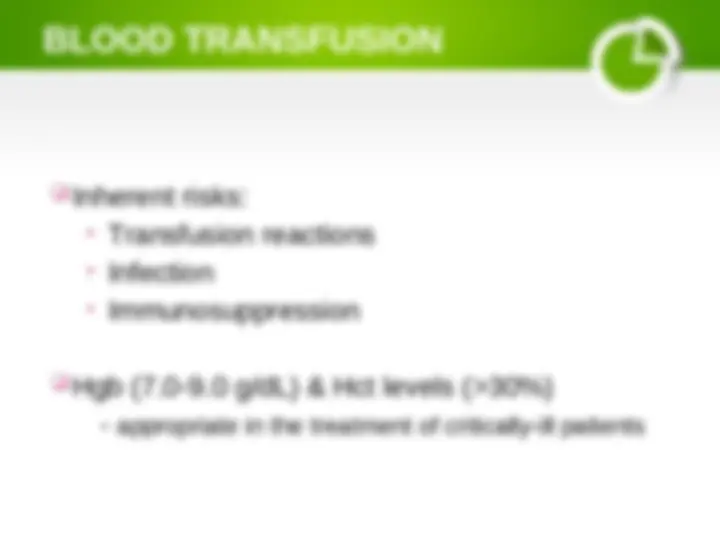
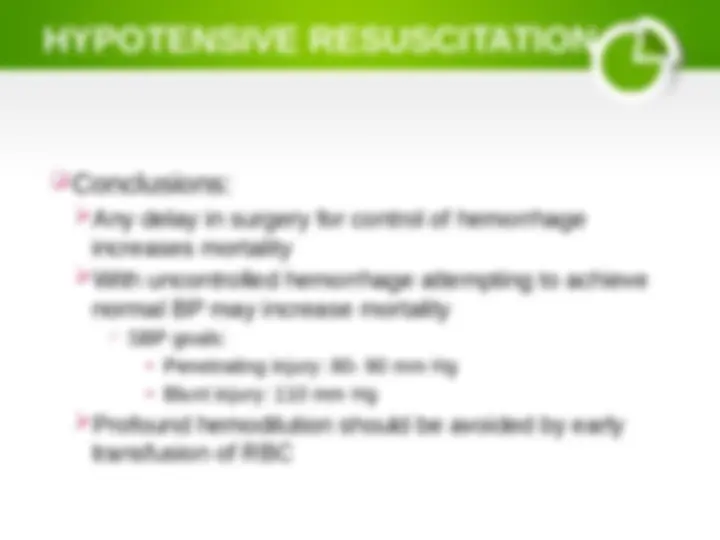



Study with the several resources on Docsity

Earn points by helping other students or get them with a premium plan


Prepare for your exams
Study with the several resources on Docsity

Earn points to download
Earn points by helping other students or get them with a premium plan
Community
Ask the community for help and clear up your study doubts
Discover the best universities in your country according to Docsity users
Free resources
Download our free guides on studying techniques, anxiety management strategies, and thesis advice from Docsity tutors
An overview of the pathophysiology, diagnosis, and management of shock. Shock is defined as inadequate organ perfusion to meet the tissue's oxygenation demand. the different types of shock, including hypovolemic, vasogenic, neurogenic, cardiogenic, distributive, obstructive, and septic shock. It also covers the stages and clinical features of shock, as well as the core principles in its management. The document concludes with an assessment of endpoints for shock management, including systemic/global, tissue-specific, and cellular endpoints.
Typology: Study Guides, Projects, Research
1 / 45

This page cannot be seen from the preview
Don't miss anything!






































Dr. JACK THOMAS.
Perpetual Succour
Hospital
Department of Surgery
I. Definition of Terms
II. Pathophysiology of shock
III. Ischemia–reperfusion injury
IV. Classification of Shock
V. Natural History of Shock
VI. Management Principles
VII.Monitoring Endpoints
VIII.Management Issues
Shock:
-John Collins Warren, 1800s
ATP + H
2
O ADP + P
i
+
Hypovolemic Shock
loss of circulating blood volume
Vasogenic Shock
↓ resistance w/in capacitance vessels
acute loss of sympathetic vascular tone
failure of the heart as a pump
Septic
Neurogenic
Anaphylactic
Adrenergic
Intrinsic
Compressive
With total body
fluid depletion
Hemorrhage
Gastrointestinal tract
losses
Renal losses
Skin losses
Open wound losses
Burns
Without total body
fluid depletion
Redistribution of the
intravascular fluid to the
interstitial or intracellular
space
Decreased preload due
to increased
intravascular capacity
(Distributive shock)
Acute blood loss
⇓
Decreased baroreceptor stimulation
⇓
Decreased inhibition of vasoconstrictor centers
Diminished output (Atrial Stretch Receptors)
⇓
Increase vasoconstriction & Peripheral arterial resistance
Treatment:
Acute MI
Pump failure
Mechanical complications
from papillary muscle
rupture
infarction
Other causes
End-stage cardiomyopathy
Myocarditis
Severe myocardial contusion
Prolonged cardiopulmonary
bypass
Septic shock with severe
myocardial depression
Left ventricular outflow
obstruction
Obstruction to left
ventricular filling
Acute mitral regurgitation
Acute aortic insufficiency